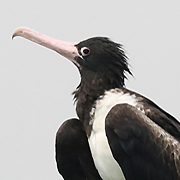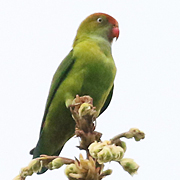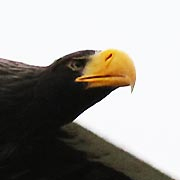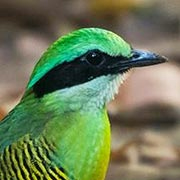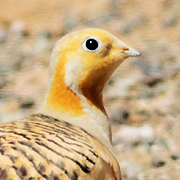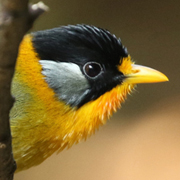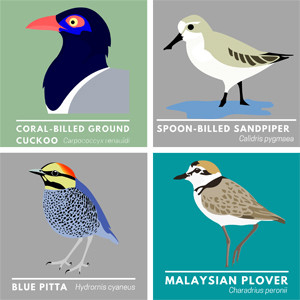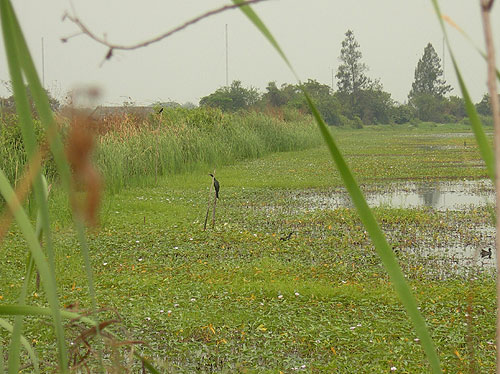
On Saturday morning (08/03/08) I finally got myself back to Muang Boran Fishponds in Samut Prakarn province – a place which used to be one of “local patches” in Thailand. Despite the slightly convoluted way in, I remembered how to get there and was on site by about 6.45am. It seemed little had changed here since my last visit four years ago and after a few minutes I had seen Striated Grassbird, Common Kingfisher, Whiskered Tern, Coppersmith Barbet (which somehow was a new bird for my site checklist: Muang Boran Fishponds Checklist), Purple Heron, Intermediate Egret, White-browed Crake, Pheasant-tailed Jacana, Asian Golden Weaver and much more – in fact I saw over 30 species within five minutes of arrival. I walked further in to the site hoping to get into the area which was always good for Acrocephalus warblers in the past but it was very difficult to walk past the large concentrations of waterbirds that were present. I was compelled to stop to count waterbirds at one pond, such was their number. I counted over 600 Lesser Whistling Ducks which is by far the highest number I have ever seen here – what does this mean? Is it that the habitat here has improved for this species or that in their past wintering grounds have been destroyed? I suspect that the latter is true. Suvarnapoom airport is not so far away and that used to be a large swampy area with many birds, perhaps many of them have moved to this site? Other interesting counts were 88 Pheasant-tailed Jacanas, 15 Bronze-winged Jacanas, over 50 Common Moorhen, 8 White-browed Crakes (1 with a small juvenile) and hundreds of Pond Herons and Egrets.
Interesting to note that out of the hundreds of Pond Herons, most were still in winter plumage, but a few Chinese Pond Herons were in breeding plumage and probably twice as many Javan Pond Herons were in breeding plumage. I have noticed over the last few weeks that Javan Pond Herons seem to come into breeding plumage slightly earlier than the Chinese Pond Herons – I don’t know if this is a regular thing or just wrongly-drawn conclusion from my own casual observations.
I hurried along to my favourite warbler hotspot but found only a few Black-browed Reed Warblers and lots of Oriental Reed Warblers, although lots of Plain Prinias were doing their best to convince me they were warblers. As I searched for more warblers, successfully finding large numbers of Black-browed Reed Warblers (couldn’t make any of them Manchurian Reed Warbler which also occurs here) and a single Rusty-rumped (Pallas’s Grasshopper) Warbler, I suddenly noticed that virtually every pond had strings across it with hooks hanging down. From these hooks were bird corpses; birds that had foolishly decided to steal fish from these ponds. In the past this practice was restricted to just a few ponds but now almost every part of the site is infested with birds traps of some sort. Here are a few pictures that I took.
Anyone who is interested can read more on this matter here: Large numbers of dead birds Muang Boran Fishponds.
On a more upbeat note, there are still large numbers of birds at this site and although Yellow and Cinnamon Bitterns seem particularly prone to ending up on a hook I saw at least 12 of the former and 6 of the latter. Another interesting bird that is commoner here than at many other locations is Yellow-bellied Prinia; I saw plenty of these little chaps, just listen for their call. It is also worth mentioning how common Striated Grassbird is here too – I have probably seen more of this species at this site than I have at all the other sites put together. Despite it being a brown job I like Striated Grassbird very much – I particularly appreciate it being very noisy and easy to see and I saw at least a dozen of them without trying. One day I will have to go back and try to count and map the number of birds holding territories here.
Continuing on I found a nice group of 11 Cotton Pygmy Geese in the corner of one pond and continued to see good numbers of White-browed Crake – one would have to be blind to miss this species here. Another good bird here is Asian Golden Weaver and the males were already in breeding plumage and busy weaving nests to impress the females. Of two small colonies I found, the larger had a total of 11 nests under construction and the smaller had 3 nests being built. In total I counted around 20 of this colourful little character. It is worth getting to Muang Boran Fishponds now just to see this lovely little species.
Another nice addition to the day list was 4 Chestnut Munias, feeding alongside the weavers. 5 Baya Weavers were also present although I saw no males in breeding condition. At this point the sheer numbers of birds inspired me to try a photo. Here is the rather feeble result.

I decided that I am better with flowers; they don’t run away or fly away.
Other birds worth mentioning were 3 Ruddy-breasted Crakes, 8 Purple Herons, 38 Indian Cormorants and 69 Oriental Pratincoles. The pratincoles seem a little early and most of them were seen scattered amongst the flames of burning undergrowth!!!
As I headed out of the site I walked back a slightly different way and as usual this detour resulted in more species. Particularly satisfying were 8 White-winged Terns amongst numerous Whiskered Terns, 3 Oriental Skylarks involved in a territorial dispute and a single Grey-headed Lapwing alongside 3 Red-wattled Lapwings.
All in all a good day’s birding and a male Greater Painted Snipe flying in close to me made it a very good day as I left. In total 79 species were a decent reward for 5 hours birdwatching in Thailand. I would have stayed for a while longer but even with a decent breeze the heat and humidity were getting to me.
birds, birding, thailand, nature


 March 10th, 2008
March 10th, 2008  Nick
Nick 







 Posted in
Posted in 
